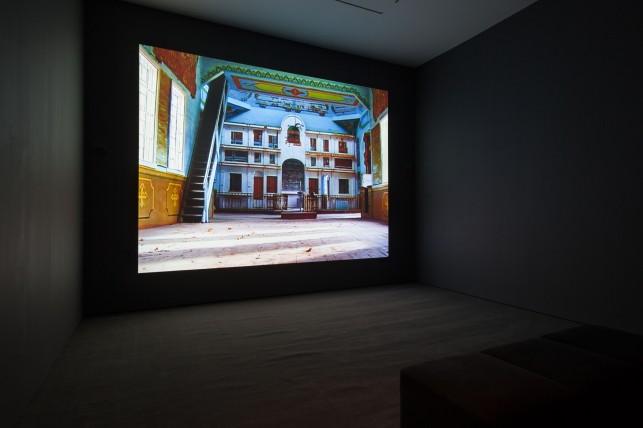Altered States of Sound
This is a blog from the MOMA posted by Makiko Wholey. I am really glad I got the opportunity to read this blog since it informed me about something new. Before reading Makiko’s blog review on
Soundings: A Contemporary Score , I had no idea such a thing exists at the Museum of Modern Art. Using sound as a form of art and expression is a concept I personally find unique. Looking at a painting or sculpture in a museum allows for the individual to interpret what they see and include their own thoughts and perspectives. Audio interpretations however are different. Audios allow the viewer to understand what the artist witnessed and felt which is what this exhibit does. Sound art lets the viewer have a different experience in comparison to regular paintings. This is done by introducing a different, not so common use of the sense of hearing. One specific sound and video installation featured in the exhibition that Makiko discuses is Jacob Kirkegaard’s piece AION. This piece illustrates the Chernobyl nuclear explosion through the use of sound. In order to produce this piece Kirkegaard visited a pool, a gymnasium, a village church, and a music hall in Ukraine, all within a 19 mile radius of the disaster. “Kirkegaard began by placing a recording device inside the dilapidated rooms and making an audio recording of the basically imperceptible sound of the abandoned space. He then played the initial recording back into the room and recorded this layered effect again. He repeated this method several times in each room, the sonic results varying for each one.”

Jacob Kirkegaard. AION. 2006. Sound and video installation. Installation view of Soundings: A Contemporary Score, August 10–November 3, 2013. © 2013 The Museum of Modern Art, New York. Photograph: Jonathan Muzikar
The fact that there is actually something to be heard in those empty rooms amazes me. This makes me wonder what lures about those places; is it spirits, ghosts or simply illusions? This was a topic that interested me. The illustration above was included in the blog as well. I admire visuals and am glad that Makiko included this one. It shows what the screening room looks like. From this, one can see that it is designed in such a way so that all focus is on the screen. This allows the viewer to capture the full experience of the sound and visual that goes along with it. Even though, I would have enjoyed more pictures, I can see why Makiko only included one; a picture cannot capture the sound experience demonstrated.
My favorite part of this blog was quote said by kirkegaard; “Perhaps only when I am unconscious do I experience silence. But when unconscious, I don’t listen. And the inaudible is not silence either. It is just sound that we don’t hear. My general interest is to create works that investigate exactly this—expanding our perception of the immediately inaudible, to go beyond ourselves and the sounds that surround us.”
This especially interested me because he brought up a valid point about sound that made me think. We experience sound all around us but can never actually listen to silence. In that quote he also states his reasoning for creating such works.
Overall, I enjoyed reading this blog. Makiko successfully informed society about a certain aspect in the museum and at the same time captured ones interest.












This is really cool because it reasserts the fact that art isn’t strictly confined to simply the visual kind. Sound art is fascinating to me because I feel like it’s more dynamic and it feels like it connects with the viewer in a much different way than silent art does. Reading about Jacob Kirkegaard’s process of creating “AION” gave me insight on how much work it took to capture each sound in the exhibit, which I liked. It’s inspiring to see how far artists go in order to turn their visions (or other senses) into reality, so thank you for sharing this blog!